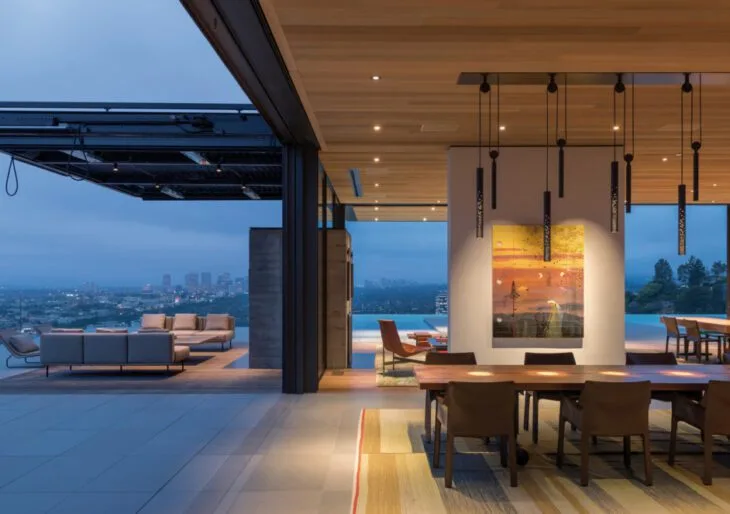Building permits are official approvals granted by local government authorities that authorize the construction, renovation, or alteration of structures within their jurisdiction. These permits serve as legal documents ensuring that proposed construction projects comply with safety, zoning, and building code regulations. Essentially, they confirm that the plans meet all necessary standards and are safe for occupancy.
Understanding Building Permits
Why are building permits necessary?
Building permits are essential for several reasons. Firstly, they safeguard public safety by ensuring that construction projects adhere to established building codes and regulations. This helps prevent potential hazards such as structural failures, fire hazards, or unsafe living conditions. Secondly, permits help maintain the integrity of the community by enforcing zoning laws and aesthetic standards. They ensure that new structures are in harmony with the surrounding environment and do not disrupt the neighborhood’s character or property values.
Consequences of not obtaining a building permit
Failure to obtain a required building permit can have serious consequences. Without a permit, construction projects may be subject to fines, penalties, or even demolition orders. Additionally, unpermitted structures may pose safety risks to occupants and neighboring properties, leading to legal liabilities in the event of accidents or injuries. Moreover, when it comes time to sell the property, unpermitted modifications can complicate the transaction process, potentially decreasing the property’s value or scaring away potential buyers.
Los Angeles County Building Permit Process
Overview of the building permit application process
The building permit application process in Los Angeles County follows a series of steps designed to ensure compliance with local building codes and regulations. It begins with the submission of a comprehensive application package and concludes with the issuance of the permit.
Key documents required for a building permit application
When applying for a building permit in Los Angeles County, several key documents are typically required to accompany the application. These may include architectural drawings, structural plans, site plans, engineering calculations, energy calculations, and other relevant documents specific to the proposed construction project.
Steps involved in obtaining a building permit in Los Angeles County
The process of obtaining a building permit in Los Angeles County involves several distinct steps, each of which plays a crucial role in ensuring the successful issuance of the permit.
- Pre-application phase: Before submitting the formal application, it is advisable to consult with the local building department to discuss the proposed project and identify any potential issues or requirements.
- Application submission: Once the pre-application phase is complete, the next step is to submit the permit application along with all required documents and fees. This initiates the formal review process by the building department.
- Plan review process: After receiving the application, the building department conducts a thorough review of the submitted plans to ensure compliance with applicable building codes, zoning ordinances, and other regulatory requirements.
- Permit issuance: Upon satisfactory review of the plans and documentation, the building department issues the building permit, granting authorization to commence construction activities.
- Inspections: Throughout the construction process, various inspections may be required to verify compliance with the approved plans and applicable building codes. These inspections typically cover different stages of construction, such as foundation, framing, electrical, plumbing, and final inspection.
- Final approval: Once all inspections have been successfully completed and any necessary corrections or modifications have been addressed, the building department grants final approval, signifying that the project meets all requirements and is ready for occupancy.
Role of Architects in Obtaining Building Permits
Importance of architects in the building permit process
Architects play a vital role in the building permit process, serving as the primary designers and coordinators of construction projects. Their expertise in architectural design, engineering principles, and building codes is instrumental in ensuring that proposed structures meet all regulatory requirements and safety standards.
How architects assist in the permit application and approval process
Architects assist clients in navigating the complex process of obtaining building permits by preparing and submitting comprehensive permit applications that comply with local regulations and building codes. They also work closely with permitting authorities to address any questions or concerns that may arise during the review process, ensuring a smooth and efficient approval process.
Common challenges architects may face during the permit process in Los Angeles County
While architects play a crucial role in the building permit process, they may encounter various challenges along the way, particularly in a densely populated and highly regulated area like Los Angeles County. Common challenges include navigating complex zoning regulations, addressing neighborhood opposition or concerns, coordinating with multiple regulatory agencies, and managing unexpected delays or revisions to the project plans.
Tips for Architects Navigating the Building Permit Process in Los Angeles County
Understanding local building codes and regulations
To navigate the building permit process effectively in Los Angeles County Building Permit architect, architects must have a thorough understanding of local building codes, zoning ordinances, and other regulatory requirements. Staying updated on changes to these regulations and consulting with regulatory authorities when necessary can help architects avoid potential pitfalls and ensure compliance with applicable standards.
Maintaining clear communication with clients and permitting authorities
Clear communication is essential throughout the building permit process, both with clients and permitting authorities. Architects should keep clients informed about the progress of their permit application and any issues that may arise during the review process. Similarly, maintaining open lines of communication with permitting authorities can help address concerns or clarify requirements, ultimately expediting the approval process.
Utilizing digital tools and resources for efficient permit processing
In today’s digital age, architects have access to a wide range of tools and resources that can streamline the building permit process. From digital plan submission platforms to online permitting portals, leveraging technology can help architects submit permit applications more efficiently, track the status of their applications, and communicate with permitting authorities remotely.
Partnering with experienced permit expeditors, if necessary
In cases where the building permit process becomes particularly challenging or time-consuming, architects may benefit from partnering with experienced permit expeditors who specialize in navigating the permit process in Los Angeles County. These professionals can offer valuable insights, expedite the review process, and help architects overcome obstacles to permit approval.
Conclusion:
Obtaining a building permit in Los Angeles County is a critical step in the construction process, ensuring that proposed projects comply with local building codes and regulations. Architects play a central role in this process, guiding clients through the permit application and approval process and navigating potential challenges along the way. By understanding the permit process, communicating effectively, and leveraging digital tools and resources, architects can streamline the permit process and help bring their clients’ visions to life in compliance with all regulatory requirements.


